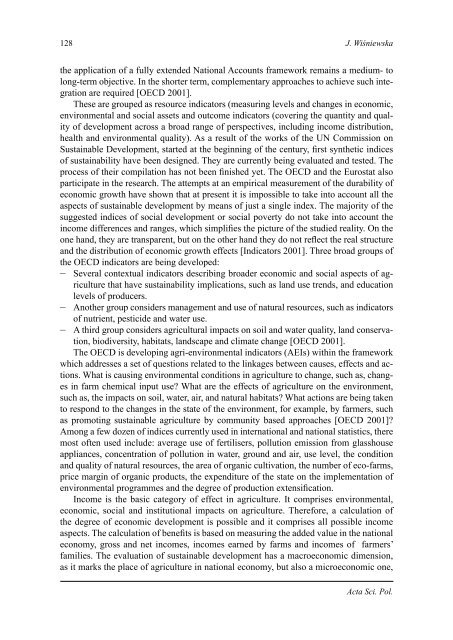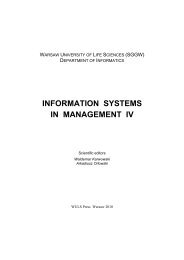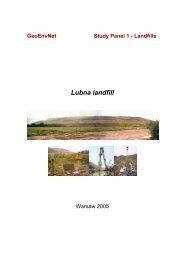ACTA SCIENTIARUM POLONORUM - SGGW
ACTA SCIENTIARUM POLONORUM - SGGW
ACTA SCIENTIARUM POLONORUM - SGGW
You also want an ePaper? Increase the reach of your titles
YUMPU automatically turns print PDFs into web optimized ePapers that Google loves.
128 J. Wiśniewskathe application of a fully extended National Accounts framework remains a medium- tolong-term objective. In the shorter term, complementary approaches to achieve such integrationare required [OECD 2001].These are grouped as resource indicators (measuring levels and changes in economic,environmental and social assets and outcome indicators (covering the quantity and qualityof development across a broad range of perspectives, including income distribution,health and environmental quality). As a result of the works of the UN Commission onSustainable Development, started at the beginning of the century, first synthetic indicesof sustainability have been designed. They are currently being evaluated and tested. Theprocess of their compilation has not been finished yet. The OECD and the Eurostat alsoparticipate in the research. The attempts at an empirical measurement of the durability ofeconomic growth have shown that at present it is impossible to take into account all theaspects of sustainable development by means of just a single index. The majority of thesuggested indices of social development or social poverty do not take into account theincome differences and ranges, which simplifies the picture of the studied reality. On theone hand, they are transparent, but on the other hand they do not reflect the real structureand the distribution of economic growth effects [Indicators 2001]. Three broad groups ofthe OECD indicators are being developed:–––Several contextual indicators describing broader economic and social aspects of agriculturethat have sustainability implications, such as land use trends, and educationlevels of producers.Another group considers management and use of natural resources, such as indicatorsof nutrient, pesticide and water use.A third group considers agricultural impacts on soil and water quality, land conservation,biodiversity, habitats, landscape and climate change [OECD 2001].The OECD is developing agri-environmental indicators (AEIs) within the frameworkwhich addresses a set of questions related to the linkages between causes, effects and actions.What is causing environmental conditions in agriculture to change, such as, changesin farm chemical input use? What are the effects of agriculture on the environment,such as, the impacts on soil, water, air, and natural habitats? What actions are being takento respond to the changes in the state of the environment, for example, by farmers, suchas promoting sustainable agriculture by community based approaches [OECD 2001]?Among a few dozen of indices currently used in international and national statistics, theremost often used include: average use of fertilisers, pollution emission from glasshouseappliances, concentration of pollution in water, ground and air, use level, the conditionand quality of natural resources, the area of organic cultivation, the number of eco-farms,price margin of organic products, the expenditure of the state on the implementation ofenvironmental programmes and the degree of production extensification.Income is the basic category of effect in agriculture. It comprises environmental,economic, social and institutional impacts on agriculture. Therefore, a calculation ofthe degree of economic development is possible and it comprises all possible incomeaspects. The calculation of benefits is based on measuring the added value in the nationaleconomy, gross and net incomes, incomes earned by farms and incomes of farmers’families. The evaluation of sustainable development has a macroeconomic dimension,as it marks the place of agriculture in national economy, but also a microeconomic one,Acta Sci. Pol.
















